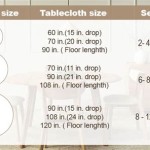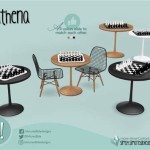Decor For Glass Dining Tables: Enhancing Aesthetics and Functionality
Glass dining tables offer a sleek, modern aesthetic that can elevate the ambiance of any dining space. Their transparency creates a sense of spaciousness and allows light to flow freely, making them particularly suitable for smaller dining areas. However, decorating a glass dining table requires a thoughtful approach to prevent it from appearing sterile or lacking in visual interest. Effective decor should complement the table's inherent qualities while also providing a cohesive and inviting atmosphere.
Choosing the right decor elements involves considering several factors, including the overall style of the room, the size and shape of the table, and the desired functionality. The goal is to create a balanced and visually appealing arrangement that enhances the dining experience without overwhelming the space. Selecting appropriate centerpieces, placemats, runners, and table linens are all essential aspects of successful glass dining table decor.
Selecting the Right Centerpiece
The centerpiece is often the focal point of a dining table, and its selection is crucial for creating a cohesive and appealing aesthetic. When choosing a centerpiece for a glass dining table, it's important to consider the table's transparency. Unlike solid wood tables, the base of a glass table is often visible, so the centerpiece should be visually appealing from all angles. Overly bulky or opaque centerpieces can obstruct the view and detract from the table's airy quality. Instead, opt for arrangements that allow light to filter through and complement the open design.
Floral arrangements are a classic and versatile choice for glass dining tables. A simple vase with a few strategically placed blooms can add a touch of elegance and color without overwhelming the space. Consider using clear glass vases to maintain the table's transparency, or choose vases with interesting shapes and textures to add visual interest. Alternatively, succulents or air plants can create a modern and low-maintenance centerpiece. Their minimalist aesthetic complements the sleekness of a glass table while adding a touch of greenery.
Sculptural objects can also serve as effective centerpieces. Choose pieces that are visually striking but not too bulky. Metal sculptures, geometric shapes, or even a collection of interesting stones can create a sophisticated and contemporary look. When selecting sculptural centerpieces, consider the overall color palette of the room and choose pieces that complement the existing decor. Avoid using items that are overly fragile or likely to tip over, as this can pose a safety hazard.
For a more functional centerpiece, consider using a decorative bowl or tray. These can be filled with fruits, vegetables, or other decorative items, adding both visual appeal and practicality to the table. A wooden bowl filled with lemons or limes can add a pop of color and a refreshing scent to the dining area. A woven tray filled with candles and small decorative objects can create a warm and inviting ambiance. When using bowls or trays as centerpieces, ensure they are appropriately sized for the table and do not impede the flow of conversation.
The height of the centerpiece is another important consideration. Ideally, the centerpiece should be tall enough to be visually appealing but not so tall that it obstructs the view of diners across the table. A good rule of thumb is to choose a centerpiece that is no taller than 12 inches. If you prefer a taller arrangement, consider using a clear vase or stand to elevate the arrangement without blocking the view. Alternatively, opt for a low, horizontal centerpiece that runs along the length of the table.
Utilizing Placemats and Table Runners
Placemats and table runners serve both decorative and functional purposes on a glass dining table. They protect the table's surface from scratches and spills while also adding visual interest and defining individual place settings. When selecting placemats and runners, consider the material, color, and texture to complement the overall aesthetic of the dining area.
Placemats made from natural materials like linen, cotton, or jute can add a touch of warmth and texture to a glass dining table. These materials are durable, easy to clean, and complement a variety of decorating styles. Linen placemats are particularly elegant and can be dressed up or down depending on the occasion. Cotton placemats are more casual and come in a wide range of colors and patterns. Jute placemats add a rustic and earthy touch to the dining area.
For a more modern and sophisticated look, consider using placemats made from materials like leather, vinyl, or silicone. Leather placemats are durable, stylish, and easy to clean. Vinyl placemats are water-resistant and come in a variety of colors and textures. Silicone placemats are heat-resistant and provide a non-slip surface for plates and utensils. When choosing these materials, ensure they are heat resistant and will not damage the glass surface.
Table runners can add a touch of elegance and visual interest to a glass dining table. They can be placed lengthwise down the center of the table or across the width of the table to define individual place settings. Choose a table runner that complements the color scheme of the room and adds a touch of texture and pattern. A silk or velvet runner can add a luxurious touch, while a cotton or linen runner can create a more relaxed and casual ambiance.
When using table runners, consider the length of the table and the desired overhang. Ideally, the runner should extend beyond the edge of the table by at least 6 inches on each side. This allows the runner to drape elegantly and adds a touch of visual interest. For a more formal setting, consider using a longer runner that extends closer to the floor. Experiment with different textures and patterns to find a runner that complements the overall aesthetic of the dining area.
The color of placemats and table runners should complement the existing decor of the dining area. Neutral colors like white, beige, or gray are versatile and can be paired with a variety of color schemes. Bold colors like red, blue, or green can add a pop of color and create a more vibrant and energetic atmosphere. Consider using complementary colors to create a visually appealing contrast.
Incorporating Table Linens and Accessories
Table linens and accessories are essential for creating a complete and inviting dining experience. They add a touch of elegance and sophistication to the table setting while also providing practicality and functionality. When selecting table linens and accessories, consider the overall style of the room and the desired ambiance.
Napkins are an essential element of any table setting. They can be made from a variety of materials, including linen, cotton, and paper. Linen napkins are the most elegant and luxurious option, while cotton napkins are more casual and versatile. Paper napkins are a convenient and affordable option for everyday use. Choose napkins that complement the color scheme of the room and add a touch of texture and pattern. Consider folding the napkins in creative ways to add a touch of visual interest.
Charger plates, also known as underplates, are decorative plates that are placed beneath the dinner plate. They add a touch of elegance and formality to the table setting. Charger plates can be made from a variety of materials, including metal, glass, and wood. Choose charger plates that complement the color scheme of the room and add a touch of texture and pattern. Consider using charger plates that are slightly larger than the dinner plates to create a visually appealing contrast.
Candles and candle holders can create a warm and inviting ambiance in the dining area. Choose candles that are appropriately sized for the table and the occasion. Taper candles are elegant and formal, while votive candles are more casual and relaxed. Consider using scented candles to add a touch of fragrance to the dining area. Choose candle holders that complement the color scheme of the room and add a touch of texture and pattern. Ensure that candles are placed in a safe location away from flammable materials.
Table lamps can add a touch of warmth and illumination to the dining area. Choose table lamps that are appropriately sized for the table and the room. Consider using lamps with dimmer switches to adjust the level of light. Lamps placed strategically can highlight the centerpiece and other decor elements. The style of the lamp should coordinate with the room's overall design aesthetic.
Small decorative objects, such as figurines, vases, or bowls, can add a personal touch to the table setting. Choose objects that reflect your personal style and complement the overall decor of the room. Avoid using too many decorative objects, as this can clutter the table and make it difficult to dine comfortably. Place the objects strategically to create a visually appealing and balanced arrangement.

40 Glass Dining Room Tables To Revamp With From Rectangle Square Round Table Centerpieces

30 Ways To Incorporate A Glass Dining Table Into Your Interior Digsdigs

101 Chic Decor Ideas For Glass Dining Table And Chairs Laura James

Add Sophistication To Your Meals With These Glass Dining Tables Modern Room Table Centerpieces

40 Glass Dining Room Tables To Revamp With From Rectangle Square

20 Dining Set Designs Perfect For Lavish Dinner Parties

15 Round Glass Dining Room Tables That Add Sophistication To Mealtime

Home Dzine Decor Ideas For Glass Dining Tables

Chrome Glass Top Dining Table Set For Affordable Home Furniture Decor Outdoors And More

Dining Table Glass Design Ideas For Your Living Room








